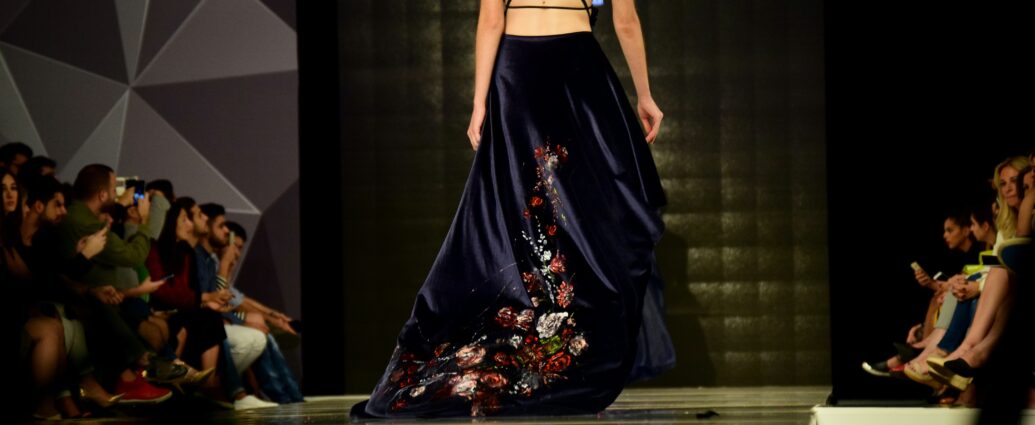TW: Discussion of transphobia, eating disorders, racism, and misogyny.
Maddie Dinnage
Following an August 2021 rebrand attempt that traded in feather-clad supermodels for simpler designs on a wider range of body types, Victoria’s Secret is set to bring back its infamous fashion show after a four-year hiatus.
While some are ready for the return of the wings, it seems impossible to forget the dark past of the underwear empire.
A fall from grace
The brand dominated the lingerie market for much of the 00s and 2010s. Despite being no stranger to scrutiny, it was CEO Les Wexner’s close relationship with Jeffrey Epstein that served as the final nail in the coffin.
The annually anticipated catwalk show – which featured the biggest names in the modelling industry, such as Tyra Banks, Heidi Klum, the Hadid sisters, and Adriana Lima – was axed after 24 years in 2019. Since then, the future direction of the brand has been very much up in the air.
Famous for its cast of international supermodels, lovingly named Angels, the Victoria’s Secret Fashion Show began in 1995, showcasing lines of lacy lingerie and slip dresses. Somewhere along the way, the fashion show became less about fashion and more about satiating the male gaze. It is no secret that the brand tended to portray one very exclusive body type, with most of the Angels being white, cisgender, and thin – the ideal environment for problematic beauty standards to reproduce.
VS and Body Image
It wasn’t long until Victoria’s Secret became synonymous with thinness, preying upon the insecurities of a young-female demographic to sell an unrealistic beauty standard in the form of lace and frills. I can’t help but feel like I’ve seen this film before – Hollister and Brandy Melville, I’m looking at you.
While selling a fantasy worked for a while, this ploy soon began to be exposed for what it is: a fantasy.
“how on earth did this celebration of disordered eating not only go unchecked but applauded, for 24 years?”
In an age of increasing social awareness, viewers began to feel downright disturbed by the lack of inclusivity among the host of picture-perfect women, with chief marketing officer Ed Razek of parent company L Brands coming under fire for asserting that transgender models would ruin the “fantasy” of the show. He also remained actively opposed to the possibility of the brand portraying a more diverse range of body types and sizes.
Rumours began to swirl regarding the encouragement of disordered eating among the Angels, with model Robyn Lawley speaking out about her experience at a VS casting: “This whole starvation-camp situation before you have to walk that catwalk is ridiculous…they have to put their bodies to such extremes once they cast the show, they couldn’t maintain that kind of lifestyle or they’d die”.
This notion of “starvation camps” was echoed by longstanding VS Angel Adriana Lima, who confessed to cutting out all solid food nine days before a show.
The only question that remains, then, is how on earth did this celebration of disordered eating not only go unchecked but applauded, for 24 years?
“given the brand’s dark past – is it too little too late for Victoria’s Secret?”
When we think of our rapidly developing understanding of body image today, surely the very last thing we need is the return of such a dangerous depiction of unhealthy eating habits, so closely centred upon the bodies of thin, able-bodied, cisgender, Western women.
And yet, whether we like it or not, the Victoria’s Secret Fashion Show is set to return later this year, with CFO Timothy Johnson confirming: “We’re going to continue to lean into the marketing spend to invest in the business and also to support the new version of our fashion show”.
Clearly, the keyword here is new. But given the brand’s dark past – is it too little too late for Victoria’s Secret? Have we finally moved past the age of men profiting from the fetishization of female bodies?
Has Victoria’s Secret changed?
“If Victoria’s Secret wants to reclaim its spot at the top of the lingerie game, it must destroy the monster it has created”
A movement towards inclusivity can be seen in the 2021 rebrand, where the brand made promises that “we’ve changed” and “we see you”. Advertisements for the new minimalist range of lingerie featured women of varying ages, ethnicities, and body types.
However, this attempt to keep up with an era of female empowerment was met with widespread criticism. With a more diverse range of bodies came inexplicably stripped-back designs, drawing attention to an important pattern that we’ve seen time and time again in plus-sized fashion – women with larger breasts like to wear glamorous underwear too!
If Victoria’s Secret wants to reclaim its spot at the top of the lingerie game, it must destroy the monster it has created. It’s difficult not to be in two minds about the return of a company with such a wide-reaching platform. Lizzo puts it perfectly when she says: “This is a win for inclusivity for inclusivity’s sake”, but “do the CEOs of these companies value true inclusivity? Or do they just value money?”
On the one hand, the celebration of under-represented bodies is certainly a movement in the correct direction; all bodies are worthy of angel status!
But I can’t help my apprehension, given the brand’s enduringly harmful legacy. Personally, I think I’ll be sticking to Savage X Fenty – Rihanna has always taken every opportunity to uplift every body.
Featured image courtesy of Rudy Issa via Unsplash. No changes were made to this image. Image license found here.

